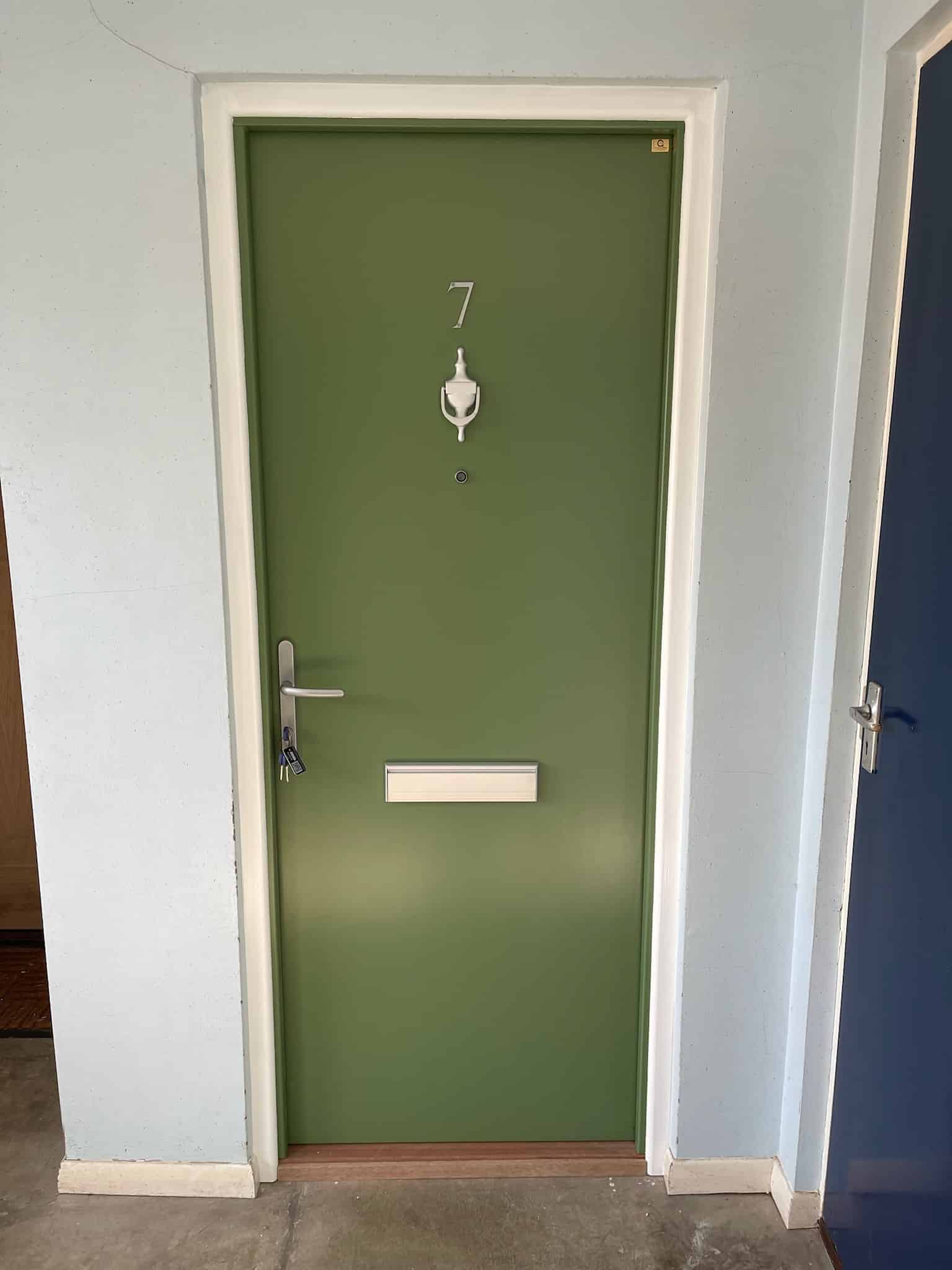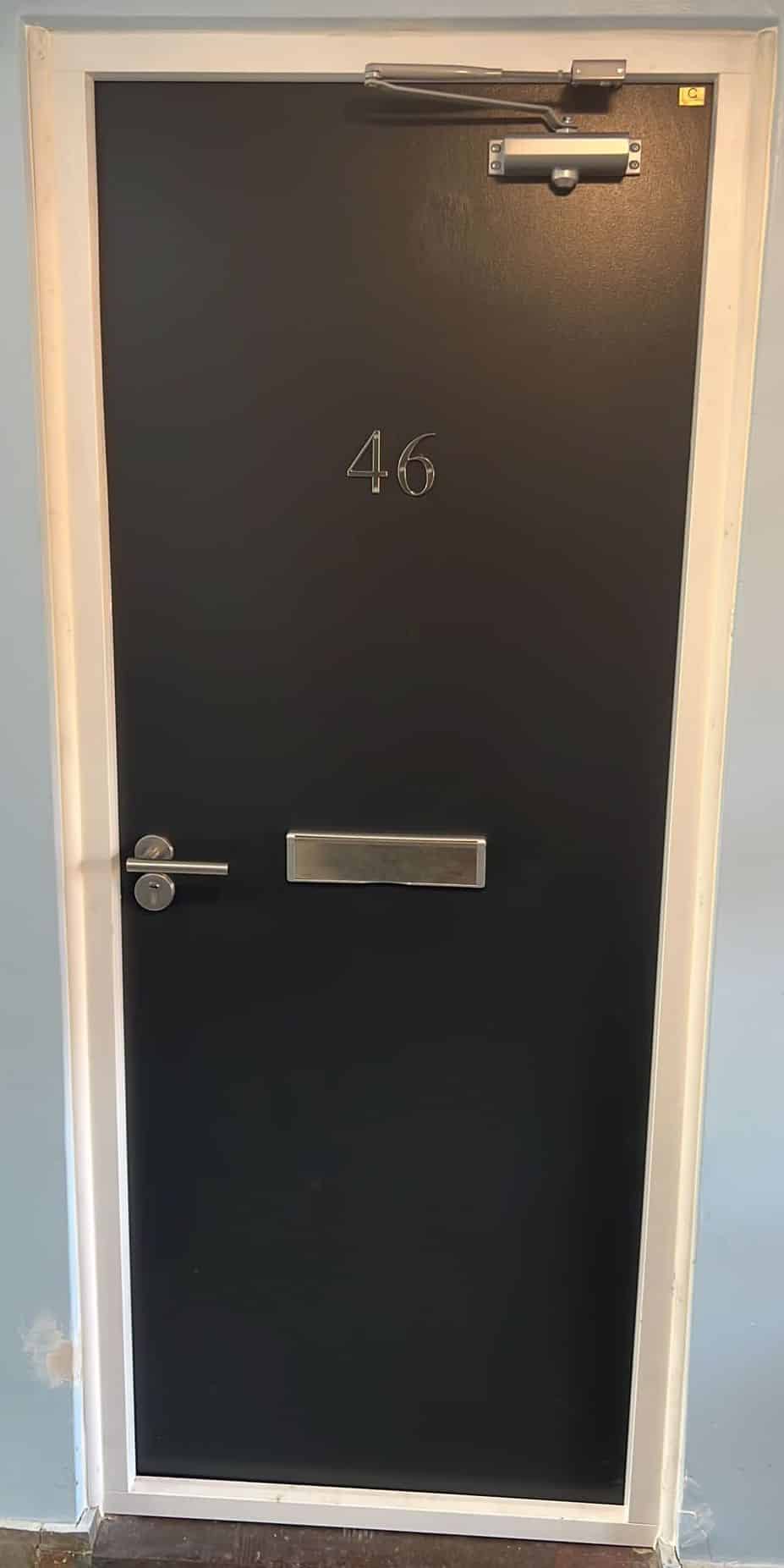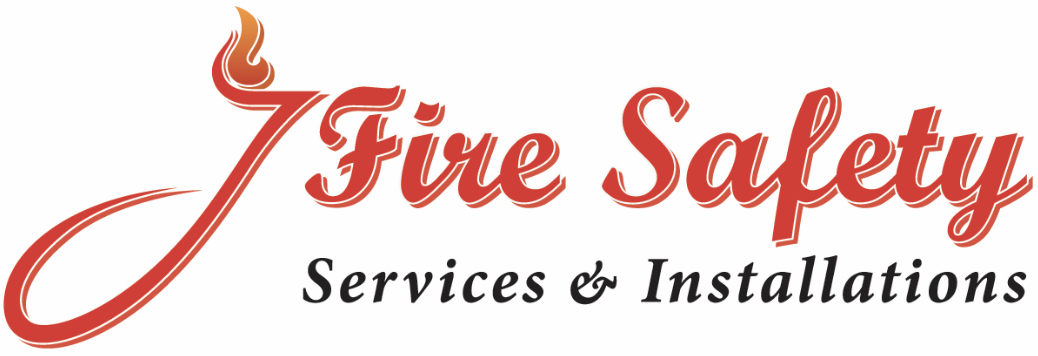Flat Front Entrance Fire Doors: A Complete Guide for UK Flats
Fire safety in flats is a critical aspect of building compliance, tenant wellbeing, and property management. One of the most vital components in this safety framework is the flat front fire door—the door that separates an individual flat from shared communal areas such as stairwells or corridors.
In this article, we break down everything you need to know about flat front fire doors in the UK, including legal regulations, the responsibilities of flat owners, landlords and tenants, and how J Fire Safety Services can help ensure compliance and peace of mind.
What is a Flat Front Fire Door?
A flat front fire door is a specially designed fire-resistant door fitted at the entrance to a flat. It plays a critical role in:
-
Containing fire and smoke for a minimum of 30 or 60 minutes (FD30 or FD60 rated doors)
-
Protecting evacuation routes such as stairways and corridors
-
Providing a barrier that allows time for residents to escape or be rescued

Legal Regulations in the UK
Flat front fire doors are legally required in most multi-occupancy buildings. Here’s a breakdown of the applicable legislation:
Regulatory Reform (Fire Safety) Order 2005
Applies to common areas of flats. Building owners (Responsible Persons) must take reasonable steps to reduce the risk of fire and ensure safe evacuation.
The Building Regulations 2010 (Approved Document B)
Requires that flat entrance doors in buildings over 11 meters (typically three stories or more) be fire-resisting and self-closing.
Fire Safety Act 2021 & Fire Safety (England) Regulations 2022
Extended responsibilities to include flat entrance doors. From January 2023, regular inspections of fire doors in buildings over 11 meters became mandatory.

Who’s Responsible?
Flat Owners / Leaseholders
-
Must ensure their flat’s front door meets fire safety standards.
-
Responsible for replacement or upgrades if the door is non-compliant.
-
Required to allow inspections in accordance with new regulations.
Landlords (Including Housing Associations and Councils)
-
Must ensure all flat front doors are compliant, especially in rented or social housing stock.
-
Legally obligated to conduct annual inspections and keep records.
-
Must address any defects or obstructions promptly.
Tenants
-
Must not tamper with or damage fire doors (e.g., removing door closers or propping doors open).
-
Should report issues such as warping, damage, or failed closers.
Benefits of Installing Certified Flat Front Fire Doors
-
Life-saving protection: Contain smoke and fire, giving occupants time to escape.
-
Regulatory compliance: Meet legal duties under fire safety laws.
-
Property protection: Reduce structural damage in the event of a fire.
-
Peace of mind: Knowing your building is protected and legally sound.
-
Insurance compliance: Many insurers require certified fire doors for valid coverage.
Different Types of Flats & Door Requirements
Purpose-Built Flats
Typically require FD30-rated fire doors at flat entrances.
Converted Houses or HMOs (Houses in Multiple Occupation)
Often need upgraded fire doors due to increased compartmentation risks.
High-Rise Flats (Over 11m)
Must meet enhanced requirements including self-closing mechanisms and regular inspections under the 2022 regulations.
FAQs: Flat Front Fire Doors
Q: Do all flats need fire doors?
A: Yes, if your flat opens into a communal area, your front door must be a certified fire door.
Q: How often should fire doors be inspected?
A: At least once a year for flat front doors in buildings over 11m; quarterly for communal fire doors.
Q: What are signs of a faulty fire door?
A: Gaps over 3mm, missing intumescent strips, broken closers, warping, or damage.
Q: Can I paint my fire door?
A: Yes, but you must use fire-resistant paint and not alter its structure or seals.
Q: Who pays for a new fire door—tenant, leaseholder, or landlord?
A: Usually the flat owner (leaseholder) is responsible for the front door unless otherwise specified in the lease.
How J Fire Safety Services Can Help
At J Fire Safety Services, we specialise in:
-
Fire Door Inspections: Full compliance checks and digital reports
-
Certified Fire Door Supply & Installation: FD30 and FD60 doors for all flat types
-
Fire Door Maintenance & Upgrades: Hinge replacement, self-closer fitting, smoke seal repairs
-
Fire Risk Assessments: For landlords, management companies, and flat owners
-
Ongoing Compliance Plans: Annual checks, tenant education, and legal record keeping
Here at J Fire Safety Services we help flat owners, landlords, and managing agents stay fully compliant while protecting lives and properties. Whether you're managing a single flat or an entire block, we have the expertise to guide you every step of the way. You can contract us on 01903 372103
Final Thoughts
Flat front fire doors aren’t just a legal requirement—they’re a vital line of defence in protecting people and property. As regulations tighten and awareness grows, ensuring your door is certified, properly installed, and regularly maintained is more important than ever.
